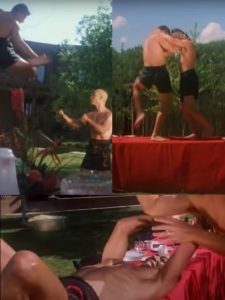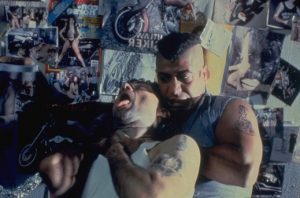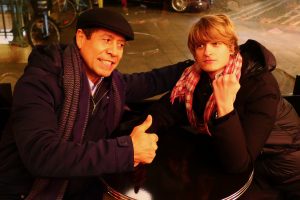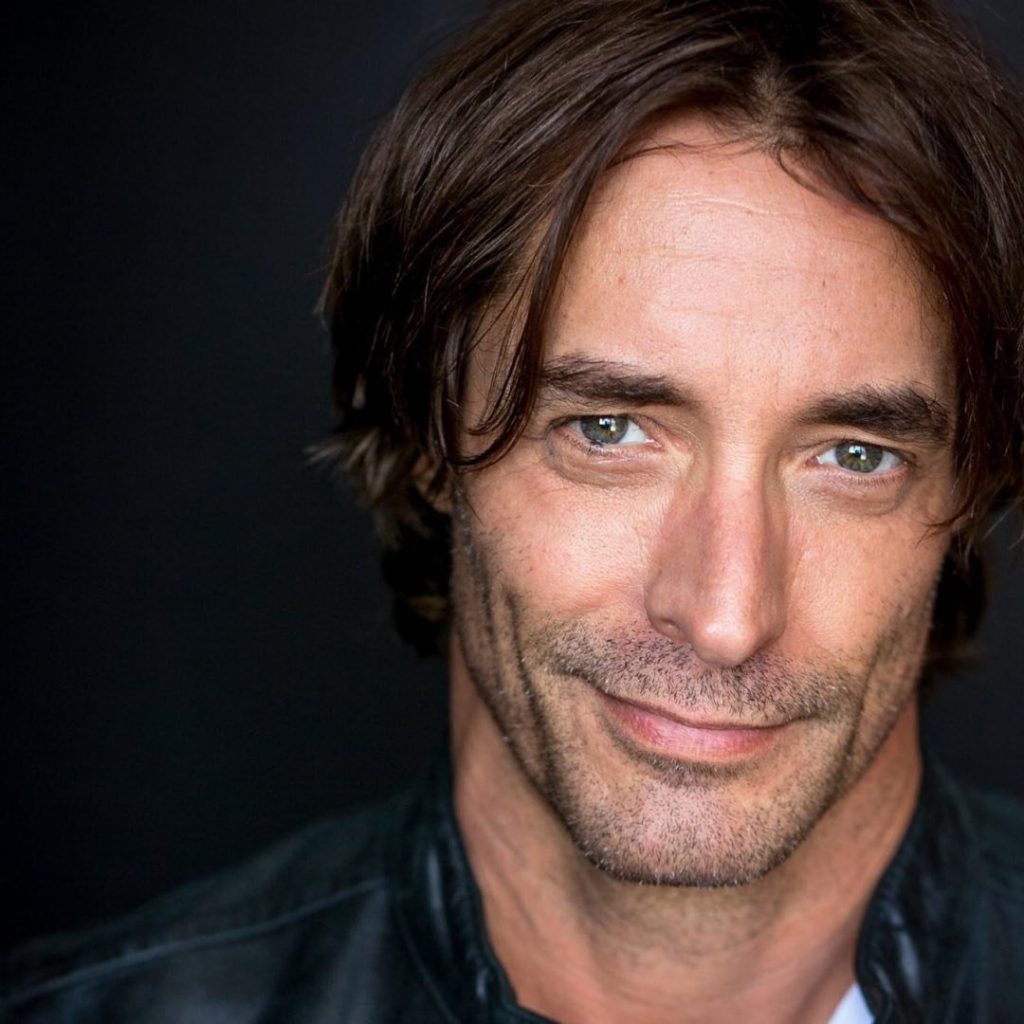
Brad Thornton is an American actor, martial artist, producer, and entertainment attorney. He tackles any challenge that presents itself, from leaping off a 250-foot railroad trellis to documenting the plight of the homeless to trekking across the High Sierras in search of tranquility and the perfect fishing hole.
Grégoire Canlorbe: From Kickboxer IV: The Aggressor to Interstellar Civil War, you’ve been an action actor for the great Albert Pyun. Please tell us about this collaboration. What did you learn alongside Mr. Pyun?
Brad Thornton: I learned a lot working with Albert. We first met during the audition process in Kickboxer 4. I remember there were like five auditions: three acting auditions and a couple of physical martial arts technique auditions. And at the beginning—this was my really first feature film where it was a lead role—and the producers, they weren’t really seeing Albert’s vision. They wanted to continue to go with Sasha Mitchell and stuff like that. And Albert wanted to give me an opportunity also to have some fun. So he kind of rewrote the Kickboxer 4 script to include my character. We got to do some of the fun stuff and this and that, and whatever. It was a blast to do. Working with him has really shown me a lot about just how quickly you can shoot an indie film. I remember on Kickboxer 4, one of our stunt scenes or whatever—a testament to the fighter I was working with, a stunt guy. We basically went through the moves about 15 minutes before we did the stunt. He said, “Okay, I’m going to come in and kick you here, I’m going to knee you here.” Then, he says, “Okay, I’m going to flip over you.”—when I grab him like this. I said, “Okay, well, when you flip over me, what about at the top of your thing, I flip over you? Then, we both land like that and just slam, slam.” And that’s the fight that ended up in that one scene. We did it in like 15 minutes, and Albert shot it in two takes, and then, we moved on. It was great.
And then, in our latest Interstellar Civil War, which we did predominantly on a green screen, it was crazy. We shot this one scene for, like, one take. It felt like 30 minutes. There were so many pages to do and stuff like that. And then, that was it. That was the print. We moved on. Not even one for safety—do another take or whatever for safety. And it was really exciting in that manner, it was like play. You really have to come prepared and ready and stuff like that. But also, where Albert is at currently, which he’s been very public with regards to his health and stuff like that and some of the challenges ahead of him with regards to dementia and Alzheimer’s: one, I understand that ’cause I helped out my grandfather who had Alzheimer’s and stuff towards the end of his life. An Albert has always been a hero to me. He gave me my first shot at that film and stuff like that. So, working with him now and stuff and where he’s at is just an amazing experience for a testament to his passion for making films, for doing it his way, and to be able to create a niche of fans that are so true, and that’s worldwide—and that’s a testament to him and his creativity and his passion. I’ve got a lot of love for him.
Grégoire Canlorbe: Lando Smith, your character in Kickboxer IV, is just as charismatic and deep as those other key protagonists of the saga that are David Sloane and Xian Chow. How did you find the inspiration for your portrayal of Lando?
Brad Thornton: That was the beginning, really, of my acting, and I wasn’t really solid on my technique, yet. So, I really drew upon just myself in that manner, and I tried to learn the lines and apply the intentions and stuff like that, but I really just tried to be present and real. You know? But I think along the way, my acting technique and the craft of acting have changed a lot, and I really love and I feel very blessed by it. I’ve trained with Iris Klein. She’s one of my coaches in LA. I began training with her mother, Janet Alhanti. And I trained at the Tom Todoroff Conservatory out of New York. And all that training has helped me hone in on my technique as an actor. So, I think that my inspiration back then, and even still today—I think you have to draw upon yourself. You know? What would you do in that imaginary situation, and how would you act and really make the lines your own? That goes a lot into the preparation and stuff. Yeah, so, I felt like I was more winging it way back then because I really didn’t have a process, per se. I just learned the lines, and I tried to be real, and that was my inspiration on that. You know? And the character was fun! It was an undercover DEA.
I got to do the fight scenes and a sex scene. Crazy for my first film. Albert is so great. He’s really great to work with as an actor. He wants to create a safe environment. I remember one scene where we improvised almost the entire scene. It was a blast!
Grégoire Canlorbe: Kickboxer IV is arguably the most sexualized installment in the saga. What stood behind this artistic decision?
Brad Thornton: I think Albert has always been on the edge, and I think that as for any filmmaker, the reality is that sex sells worldwide in that aspect. If you have a film that does have some sex scenes and then, has some martial arts fighting from all different types of martial arts and an underlying story that’s interesting and stuff like that—that’s all these winning combinations for any film that has a worldwide market, that can be translated into many different languages. By today’s standards, anyway, I think it’s pretty tame.
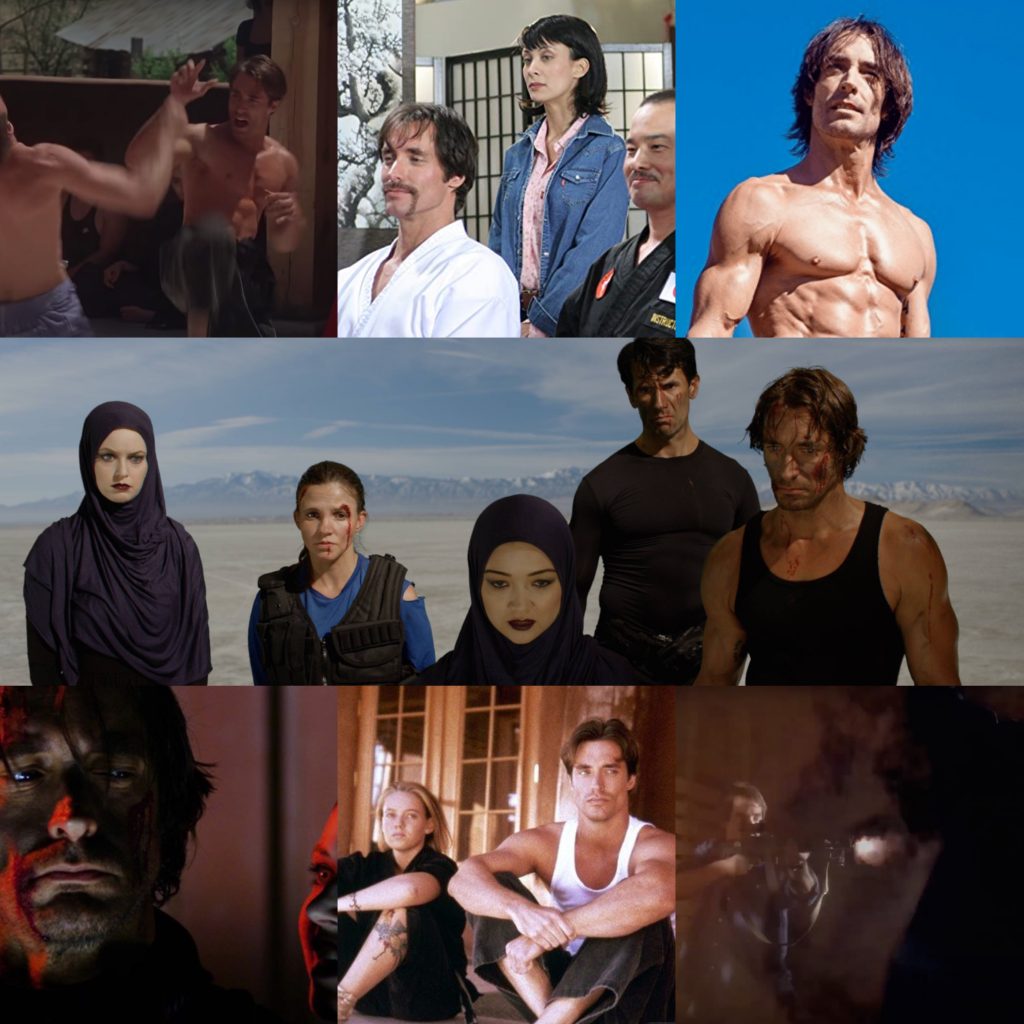
Grégoire Canlorbe: Please tell us about your collaboration with the man who’s been bearing the Kickboxer sequels on his shoulders—Sasha Mitchell.
Brad Thornton: Sasha is great. He was very gracious, and we had a really good time shooting Kickboxer 4. Then, I’ve seen him at other martial arts events or whatever, lately, and oh, my gosh, he’s like a mountain! That guy is so huge. I can’t believe how big he’s gotten and stuff like that. But he looks like he’s in amazing shape, and he’s always been such a great, nice guy to me.
Grégoire Canlorbe: What about Kamel Krifa, who portrays Tong Po in Kickboxer IV?
Brad Thornton: Kamel is a great guy, been a friend of mine since KB4. We’ve had lunches and coffees and chats together. I love him. He’s like a brother. When he comes to town—I haven’t seen him in a couple of years, but we’re always talking about what we could do next—that kind of thing. He’s a go-getter. He’s a great martial artist.
Grégoire Canlorbe: Besides Kickboxer IV, another martial-arts movie in which you acted is The Sensei. How do you feel it enriches the genre?
Brad Thornton: I love The Sensei. It’s when I first met Ron Balicki and Diana Lee Inosanto—Bruce Lee’s goddaughter—they came to me to help with the production, legal and stuff like that. Then, one thing led to another, and I got to audition, and they realized I was an actor, and we’ve been friends and family ever since. I trained and learned things from Ron as a guru, martial arts wise. And Diana, she’s just really an amazing soul. Love her. What I really loved about The Sensei was it was at a time where it put into the conversation AIDS, sexual preference and a lot of other things that are not necessarily ever brought up in the martial arts films. And it has a unique twist about it with regards to The Sensei and people’s misconceptions of others and their judgments on others. I believe that it also teaches some of the spirituality aspects of martial arts, what that brings, as well. And it’s a great storyline. It’s got action. It really was a great little film, I think, that really touched a lot of people.
Grégoire Canlorbe: You had the opportunity to act alongside legendary actor David Carradine [Bill in Quentin Tarantino’s Kill Bill diptych] in a movie adaptation of Shakespeare’s Richard III. Sounds thrilling.
Brad Thornton: That was a crazy, fun film. It was Shakespeare in modern day. Right off the bat, I got to say, the best thing about that film is that I met my wife on that film. But we weren’t together then, and we didn’t get together for years after that, but that’s why I first met her. The film was a fun Shakespearean film. I got the opportunity to work with some iconic actors at the time. I had a scene with David Carradine and María Conchita Alonso and Anne Jeffreys, all these really iconic actors that it was just an honor to be in their presence. And then, the word Shakespeare and stuff like that, it was my first real opportunity to do that, and that was a challenge. But I think that also, as my journey as an actor, really, I love Shakespeare now. I love doing Hamlet and Hamlet‘s advice to players and all of these things.
Grégoire Canlorbe: Let’s talk about your passion for motorcycle. How did the latter take shape? Do you have some favorite road movie?
Brad Thornton: I love motorcycles. I started riding motorcycles when I was a kid before I learned how to drive a car, a dirt bike, or whatnot. I’ve got a funny story about that, actually. I was living in Tennessee at the time, and I did this one commercial for the Army for motorcycle safety. This was near Fort Campbell where the Special Forces are stationed. It was actually this Green Beret’s jet bike that I was on. We all met at this park area where it had a little trail and stuff like that. It was a Ducati bike, and it’s got some power to it. I wanted to go test it out a little bit to just feel the response and everything else. I asked them, I said, “Listen, before we start shooting can I take it for a spin to get the feel of it?”—cause they’re still doing prep. The director is getting the shot all set up and stuff like that. Army guys are there, Special Forces guy has got his bike, He says, “Yeah, go right ahead.” So, I hop on the bike and I’m like vroom, vroom, vroom—I come around this one corner and I downshift hard and the shifter pedal breaks, snaps. Just snaps. I mean, it’s really hard metal. I’ve ridden a bike for a long time and this was a first. I don’t know what the heck happened, but it snapped, and right at the apex of this turn like this.
I’m thinking, “Oh my God! I broke the bike. We haven’t even shot the commercial, yet, they’re going to kill me!” And it’s a Green Beret guy, he’s really going to kill me. So, I come back around like this and I tried to put it in neutral, pulled clutch and stuff, and I wheel it all in there, and I’m like, “Oh, my God! I just broke the shifter pedal.” The guy didn’t look that surprised. He tells me it had broke before and then goes to fix it with a Swiffer broom handle, duct tape and wire.
Grégoire Canlorbe: How do you react to that scene in Ridley Scott’s Black Rain with a gang of yakuzas perpetrating a beheading while riding their motorcycles?
On another note, I believe Ridley Scott’s esthetics in his movies, his work on images, has been quite influential on the esthetics of Albert Pyun. Especially when it comes to Pyun’s Nemesis, the visual aspect of which is quite reminiscent of Blade Runner. You know, Pyun may work with low budgets; but he always manages to deliver refined, astonishing, visuals.
Brad Thornton: I love Black Rain. I had an amazing time living in Japan on and off for about a year and a half, about three months, three-four months each time. Such great times! And yes, Albert Pyun is definitely able to make something out of nothing.
Grégoire Canlorbe: Do you have some favorite road or landscape for your motorcycle journeys?
Brad Thornton: I love going down Topanga Canyon around here. It’s like a canyon and stuff like that. Then, it basically drops you off at the Pacific Coast Highway, which is right next to the beach. Then, you can see the ocean as you drive on up, and the wind is cool and stuff like that. It’s probably one of my favorite places to ride.
Grégoire Canlorbe: You worked as a bodyguard for Arnold Schwarzenegger and his family. How is the man behind the legend?
Brad Thornton: Arnold and family are amazing, it was an honor and a pleasure to work with them. They were so gracious and sweet to me the whole time I worked with them. Everybody really was. It was a lot of fun. I got a lot of funny stories about that. I’ll tell you this one story. I don’t know if they still have it, but they had this potbelly pig named Bacon. I had one of the night shifts. It was about 2.30, 3 o’clock in the morning, and I’m in the guard shack right by the house and I start to smell smoke. So, I went outside and I come around this corner, and Bacon is in the middle of his little house, and the house’s flames are on fire, like 3 feet in the air. So, I yell to get Bacon out. The pig wouldn’t come out. I run back, grab the fire extinguisher, come back out. The pig is still just standing there in the middle of his house burning down. Bacon was actually going to become bacon. I squirted in the fire extinguisher, which scared Bacon to finally come out. What had happened was that they had put this light in there to keep Bacon warm. But the wire had basically been in a situation where every time they opened and shut the top, it hit the wire and eventually, it broke through and created like a short.
Grégoire Canlorbe: The Cursed is a peak in your career both as an actor and a producer. How did you get involved with the project? How do you remember the filming?
Brad Thornton: That’s one of the special films, too, The Cursed. You know, one of my near and dear friends, Phil Melfi, he—rest his soul—passed away a few months after we finished everything. He had called me up out of blue and said, “Hey, I got this screenplay written by Devin Watson”—who’s his friend there, in Tennessee, which is a great place to shoot—“Let’s go make a movie. I got the budget.” And off we went! We got everybody together and got to Tennessee and shot this little film in the town of McMinnville, Tennessee. Louis Mandylor was there, a dear friend of mine, now. It was just such a fun time, and people in McMinnville were all really amazing and very gracious. Ron Balicki worked on it with me as stunt coordinator, Mike Jones was our fire guy. A funny story we had this one shot where we were going to light Ron on fire. He was in his freezing cold gel soaked undergarments and was already shivering. Basically, once you put it on, you really want to get lit on fire soon after that or you’ll get hypothermia.
So, Ron gets all this stuff on, gets the monster costume on, he gets on out there like that, and he’s standing in the middle of the barn. Then, Louis and I are standing a bit away from hims ready to shoot the last scene of the monster getting set on fire. We’re supposed to throw these Molotov cocktail cocktails on the monster, and he lights up. Problem is that the lighter we had got soaked in that gel. So, we got cameras rolling and we’re trying to light the thing on fire. Thankfully some of the smokers in the group had back up. Ron was really ready to get set ablaze at that point. It’s also the first time I did a basic jerk pulley stunt, I think that’s what they call it, where the monster slaps me and I fly in the air. I love doing stunts so I was like a kid in a candy store! The Cursed really, though, most importantly, I made a lot of dear friends. And if it wasn’t for Phil Melfi, we would have never made that film. It’s basically his film.
Grégoire Canlorbe: Your favorite boogeyman in horror movies.
Brad Thornton: Probably Jason because I met Douglas Tait, who played Jason. Cool guy, And tall!
Grégoire Canlorbe: While Rich in Spirit (which you directed) is a documentary about homelessness, the Prey series, one of your feats of arms as a producer, tells the fate of a homeless veteran struggling with his inner demons. Why is homelessness a topic so meaningful to you?
Brad Thornton: I think—like the title in the documentary suggests—which neither one of those ever got distributed or anything like that, unfortunately—but Rich in Spirit: we’re all rich in spirit. I’ve always believed that we are all spirit. And being out there and being homeless, it just has always broken my heart in a way that I felt like I wanted to put a voice out there, especially those who are veterans who’ve served the country and who end up homeless, or just help anyone in general. I shot a lot of footage. I went out and I slept in homeless camps. These homeless people were very gracious to me to allow me to come into their inner communities and talk and stuff like that. This was in Nashville. One of the great places I found there was Room in The Inn, a homeless transitional situation where it’s got three different stages. Homelessness in general is a very sad thing.
Grégoire Canlorbe: How do you assess those movies that are Ted Kotcheff’s First Blood (Rambo) and Clint Eastwood’s American Sniper, which more or less lie in the same vein as Prey?
Brad Thornton: Those are two favorite movies of mine. They’re action films, and they have great topics underlying the action and stuff like that. I love them, they’re cool.
Grégoire Canlorbe: What do you think of this road movie that is Clint Eastwood’s last movie (as it stands), Cry Macho?
Brad Thornton: Cry Macho, I think it’s interesting. For me, Clint Eastwood is someone who is iconic. I’ve loved his movies ever since I started watching all the spaghetti westerns or whatever that they call them. I also love that on his sets when he’s directing that he’s really a calm director. So I’ve heard, haven’t worked with him yet!
Grégoire Canlorbe: How did it feel to explore the SF-genre on the occasion of your acting in Interstellar Civil War?
Brad Thornton: I think sci-fi in general—the main difference on that film was that the majority of it was shot on a green screen. That was really great. It was like an exercise in sensory memory. You really have to imagine what’s out there and what you’re talking to and what you’re seeing and where you’re at and all that stuff. Even in a sense, remember, we’re supposed to be in this desert after this time and stuff like that. So, you really have to feel the heat beating up on you and the desert and stuff, your face, everything, the sand gets everywhere, you just start to feel gritty, and you got to allow yourself to have some time to just get into that space. When you’re looking out, when you’re looking at this little piece of gaffer’s tape for an eyeline, that piece of gaffer’s tape is actually an object or something else or whatever that’s in the scene, which you have to react to. It was fun. Star Wars is one of my favorites!
Grégoire Canlorbe: Would you be ready to act in a new Star Wars movie or TV-series?
Brad Thornton: Yes, I would love to. My friend Diana Lee Inosanto was in the Boba Fett thing, and I love it. I love Star Wars. I was a kid playing with little Star Wars dudes or whatever with my cousin Scott Thornton, and it was just a lot of fun. Yeah, I would jump at the chance to audition for anything in the Star Wars community or world or whatever. If there’s any casting out there listening, please, call my agent, Eddie Culbertson.
Grégoire Canlorbe: What about a Kickboxer–Star Wars crossover directed by Pyun in which a Force-sensitive Tong Po would have a fight with Darth Vader? Would you like to be part of such adventure?
Brad Thornton: I think so. I think Lando goes to space—yeah, sure, why not? I do think that we did have some fun scenes in Interstellar and stuff like that dealt with like, basic Eskrima, martial arts, which was the laser blade fights and stuff like that. There’s kicks and punches all throughout. There’s soon to be a release date—I’m not sure what that date is, but I don’t think it’s yet released, so, hopefully, it will be soon.
Grégoire Canlorbe: Thank you for your time. Please feel free to add anything.
Brad Thornton: Thank you. Actually, my latest work was on Fox’s new hit TV show The Cleaning Lady. Melissa Carter and Miranda Kwok’s show that was directed by Milan Cheylov, and Jeff Cadiente was the stunt coordinator. It really was just such a fun experience. Everyone working on that show is amazing! I was able to play Travis, a guns running bad guy in the finale of the first season. I love it when roles combine acting with stunts! Milan had told me, “We’re going to get a big death for you!” and it was! Put a gatorback on and flung mysef into the air. My kind of fun!
I guess that’s it. I appreciate your thoughtful questions and your interview. Thank you!
That conversation was originally published in Bulletproof Action, in December 2022
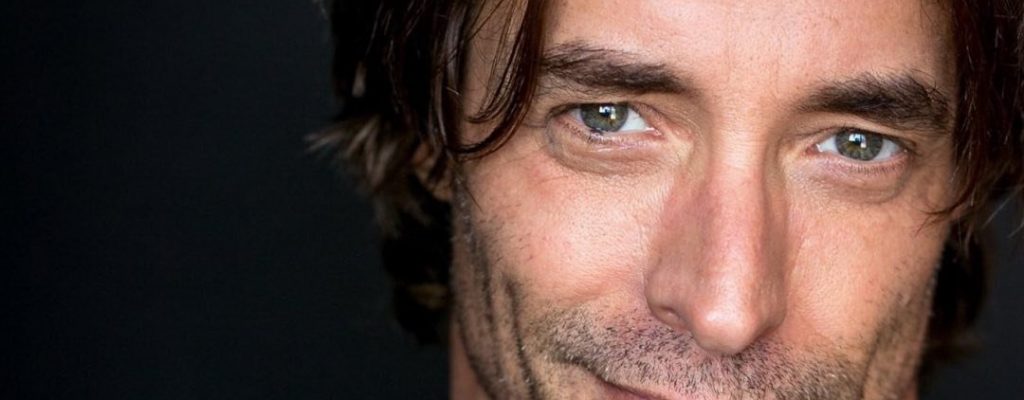
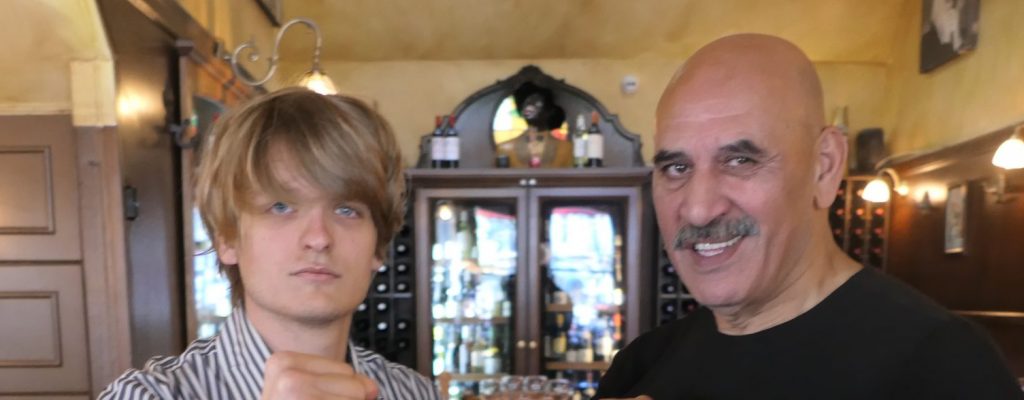
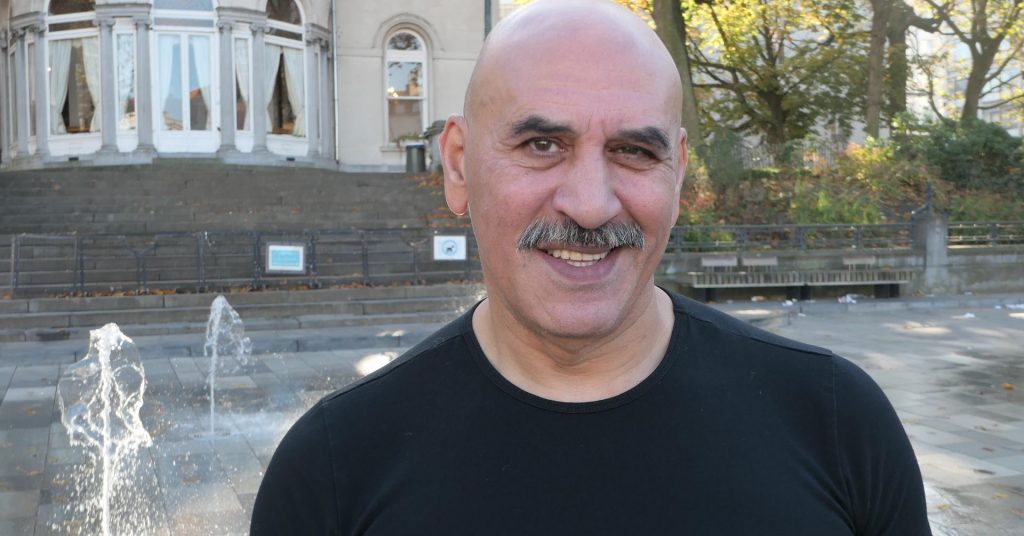
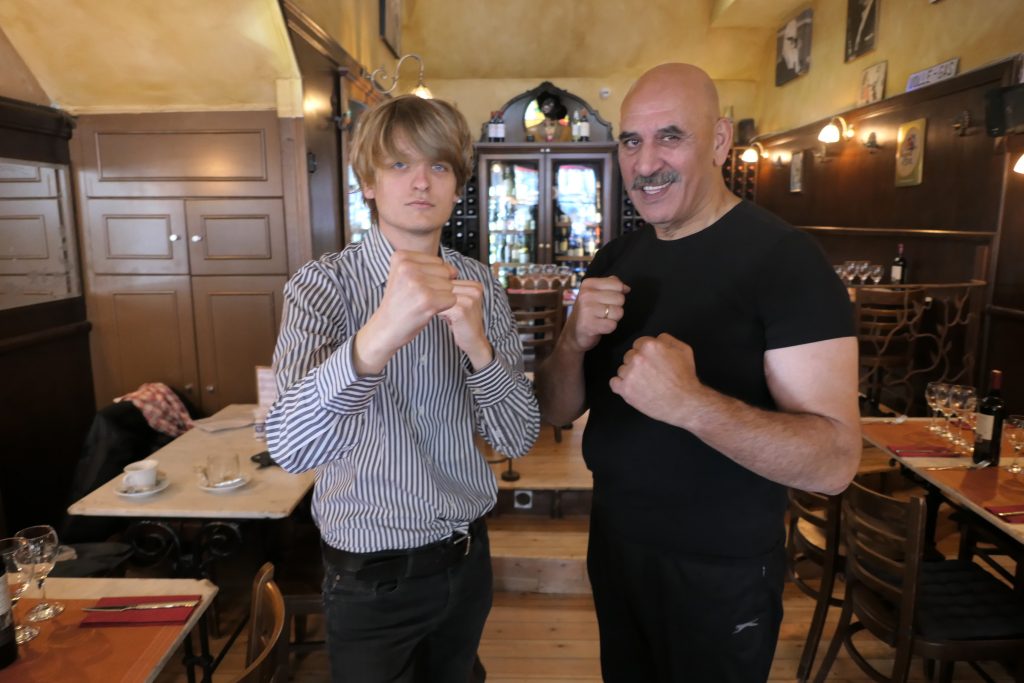
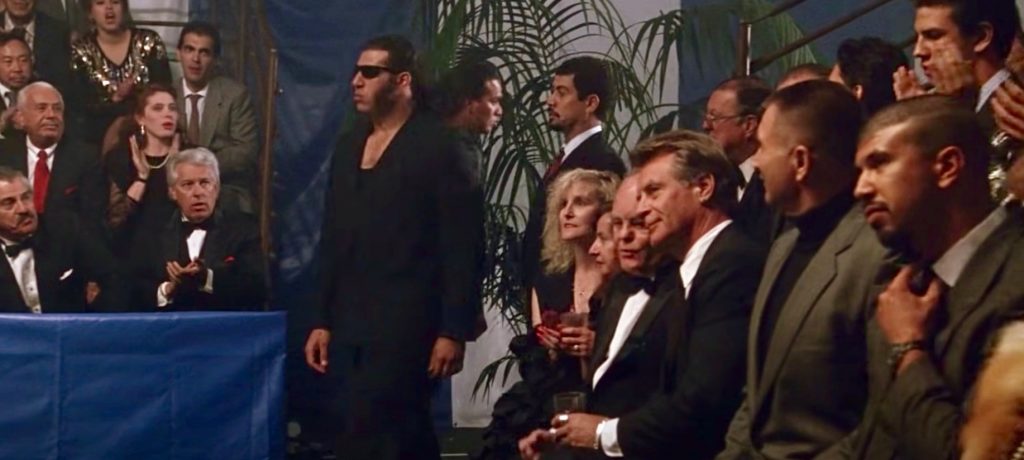
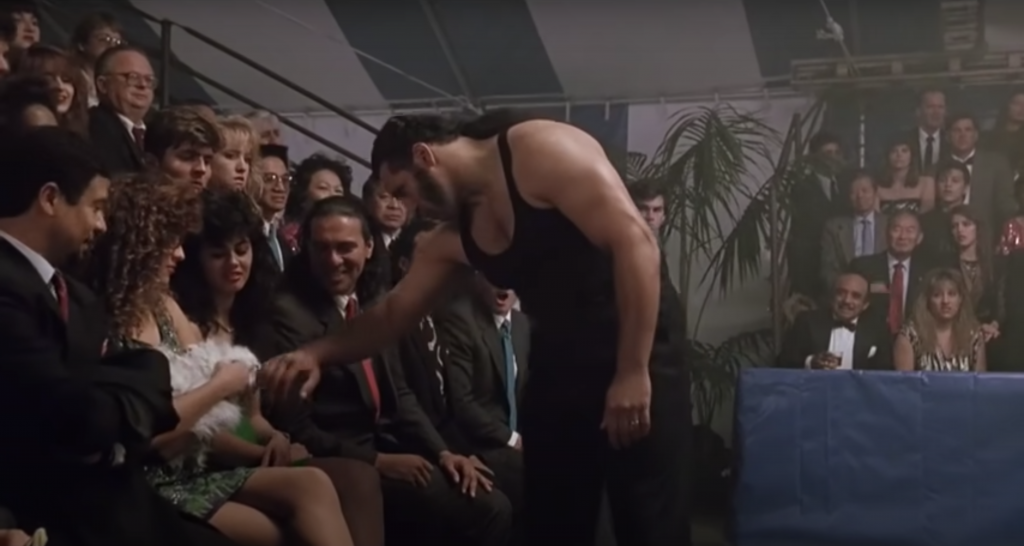
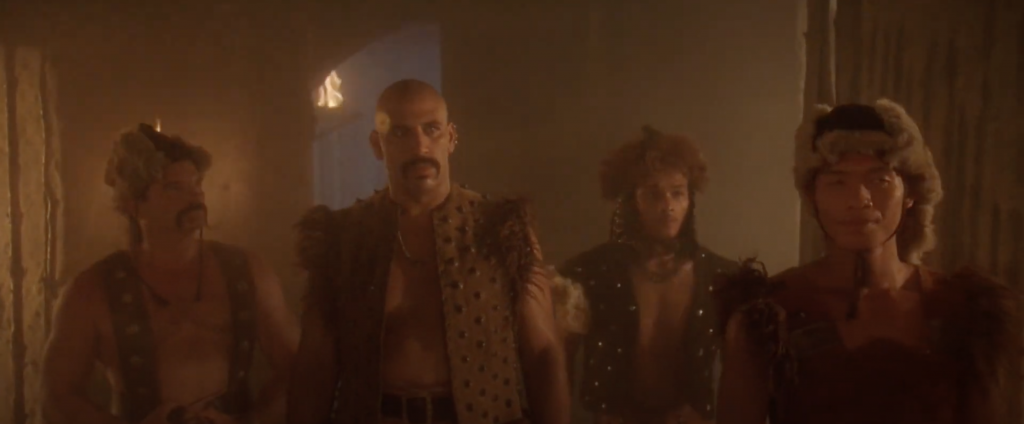
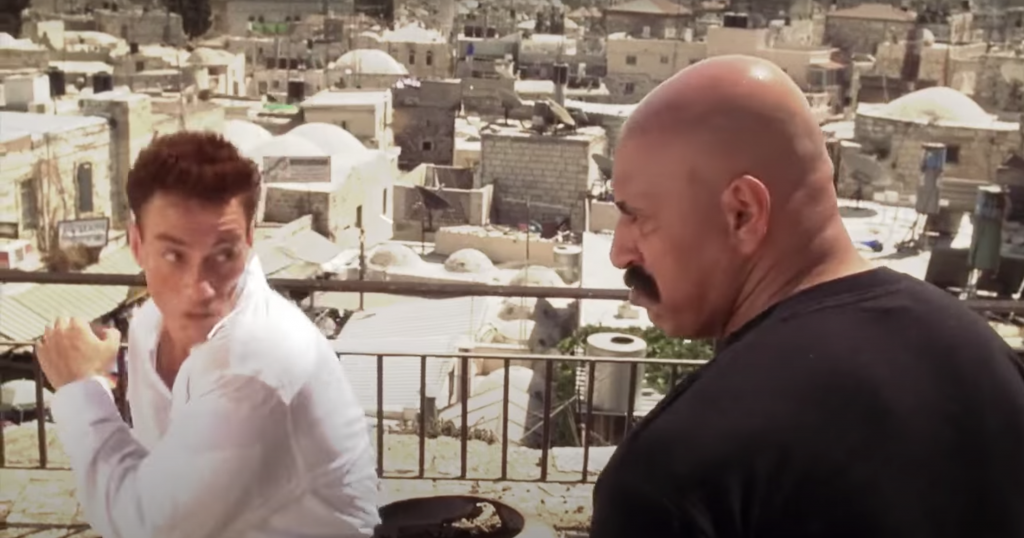
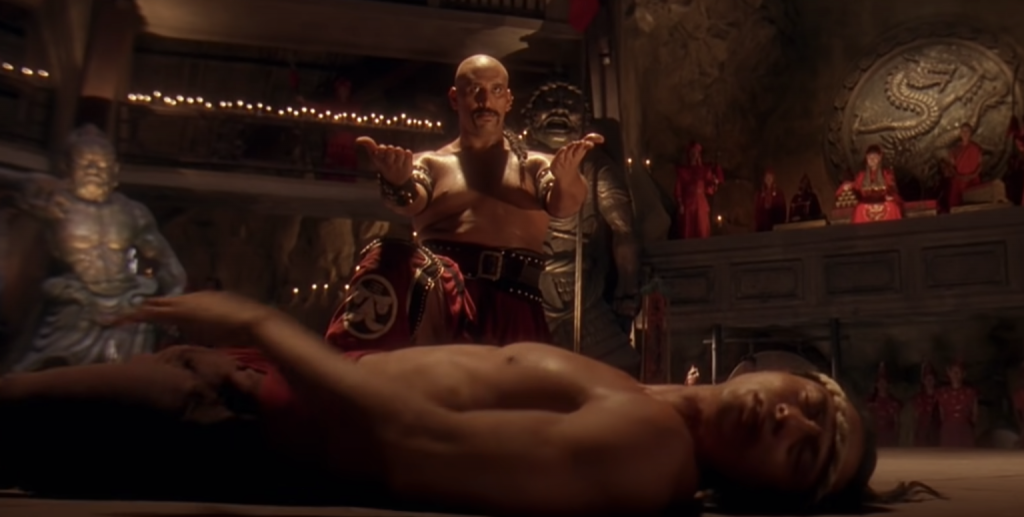
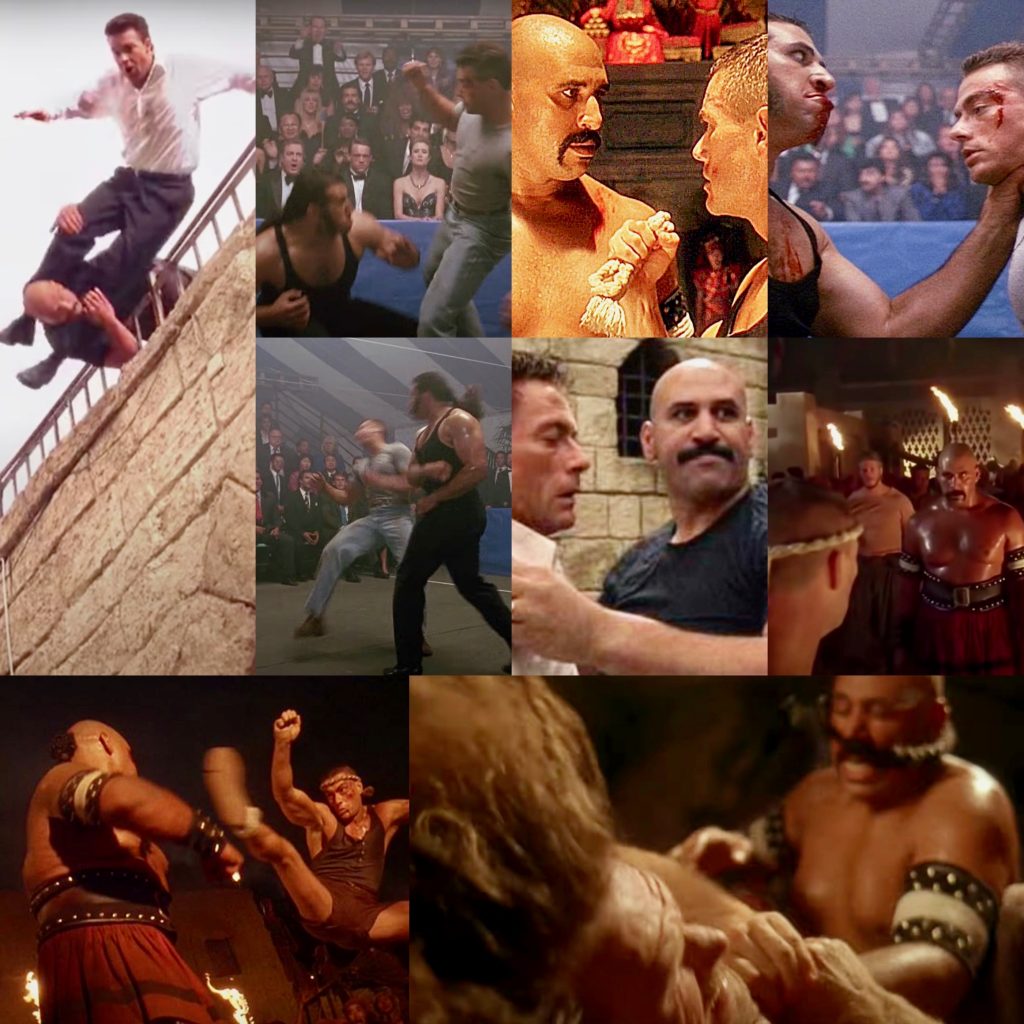
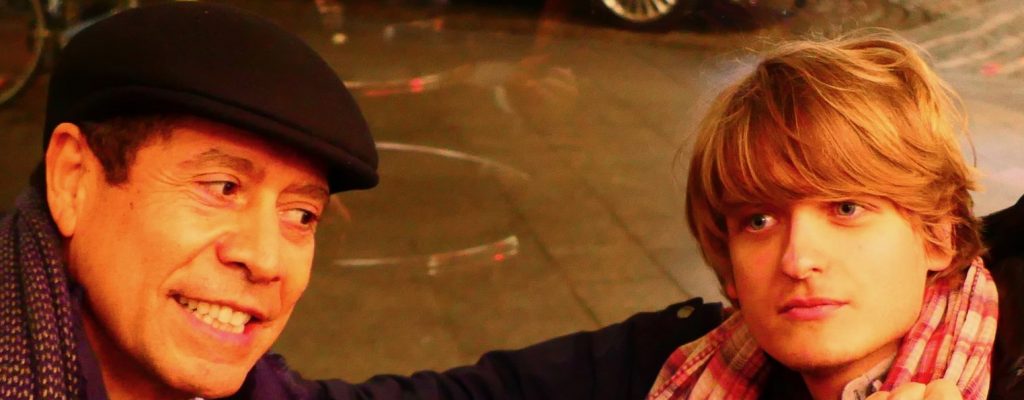
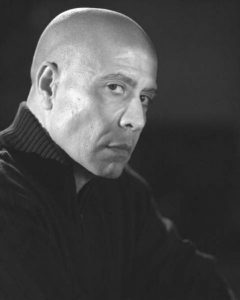 Kamel Krifa is an actor, film producer, and Hollywood’s stars trainer—including Jean-Claude Van Damme, Michelle Rodriguez, Eddie Griffin, Steven Seagal, and many other ones. Krifa ranks among Van Damme’s longstanding collaborators and personal friends, acting alongside him in various movies. This conversation with cultural journalist Grégoire Canlorbe first happened in Paris, in July 2017; it was resumed and validated in April 2020.
Kamel Krifa is an actor, film producer, and Hollywood’s stars trainer—including Jean-Claude Van Damme, Michelle Rodriguez, Eddie Griffin, Steven Seagal, and many other ones. Krifa ranks among Van Damme’s longstanding collaborators and personal friends, acting alongside him in various movies. This conversation with cultural journalist Grégoire Canlorbe first happened in Paris, in July 2017; it was resumed and validated in April 2020.